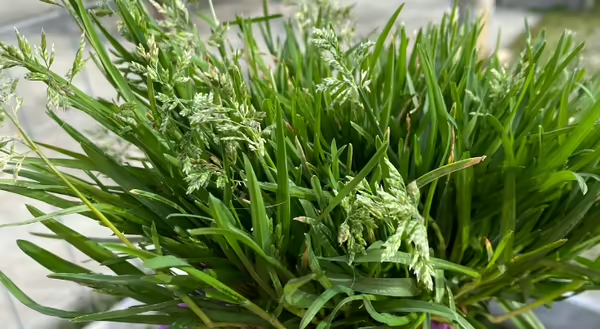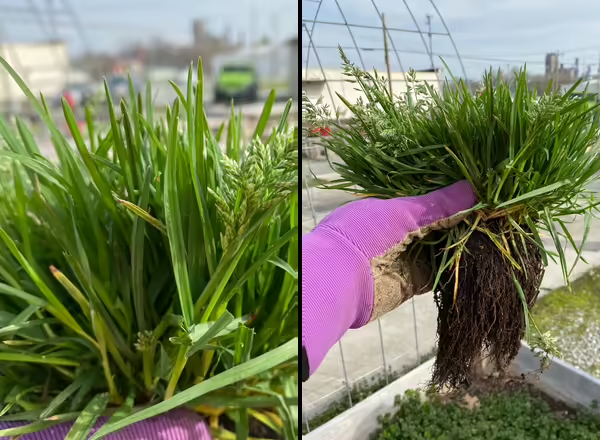
A couple of weeks ago I was working in a food donation garden, prepping raised beds in anticipation of planting early spring crops. Some of the raised beds were covered in weeds that needed to be removed. One of them happened to be Annual Bluegrass, Poa annua. This grass already had an impressive root system and was flowering, and it was only March 1! Let’s look a bit closer at this grass.
Annual Bluegrass is a non-native species, often growing in sidewalk cracks, gardens, and other disturbed areas. As you could probably guess from the name, it is an annual grass (we won’t talk about it today, but there is a perennial subspecies of this grass too!). It does a good job of reseeding itself, which is why you can see it time and time again in the same spot.

This grass is short in size, grows in a dense clump, and produces fibrous roots, making it easier to weed than rhizomatous grasses. Like other bluegrasses, the leaves of Annual Bluegrass have a keeled, or boat-shaped tip. This means that the tip of the blade looks like the front of a kayak.
Annual Bluegrass produces a panicle inflorescence with pointed spikelets. If you have a Kentucky Bluegrass lawn, the inflorescence looks very similar. The key to controlling this plant is to remove it before it sets seed.
As you start to venture outside for outdoor activities this spring, pay attention to small clumps of bright green grass growing in disturbed areas – it might just be Annual Bluegrass.
Never miss a new post! Sign up for our email list.
ABOUT THE AUTHOR: Erin Garrett is a Natural Resources, Environment, and Energy Educator for University of Illinois Extension serving Alexander, Johnson, Massac, Pulaski, and Union counties. Erin develops and delivers high impact programming to adults and youth to help them develop an appreciation for natural resources and to empower them to make small changes to positively impact the environment. Erin’s programming focuses on why homeowners should consider choosing native plants, how to support native pollinators, how to identify grasses, how to identify and manage invasive species, and developing an appreciation for prairie ecosystems.
ABOUT THE BLOG: Grasses at a Glance dives into grass identification, focusing on tips and tricks that make grass identification possible. Get information about native and non-native species, how to tell look-alikes apart, and which grasses you can find in Illinois.